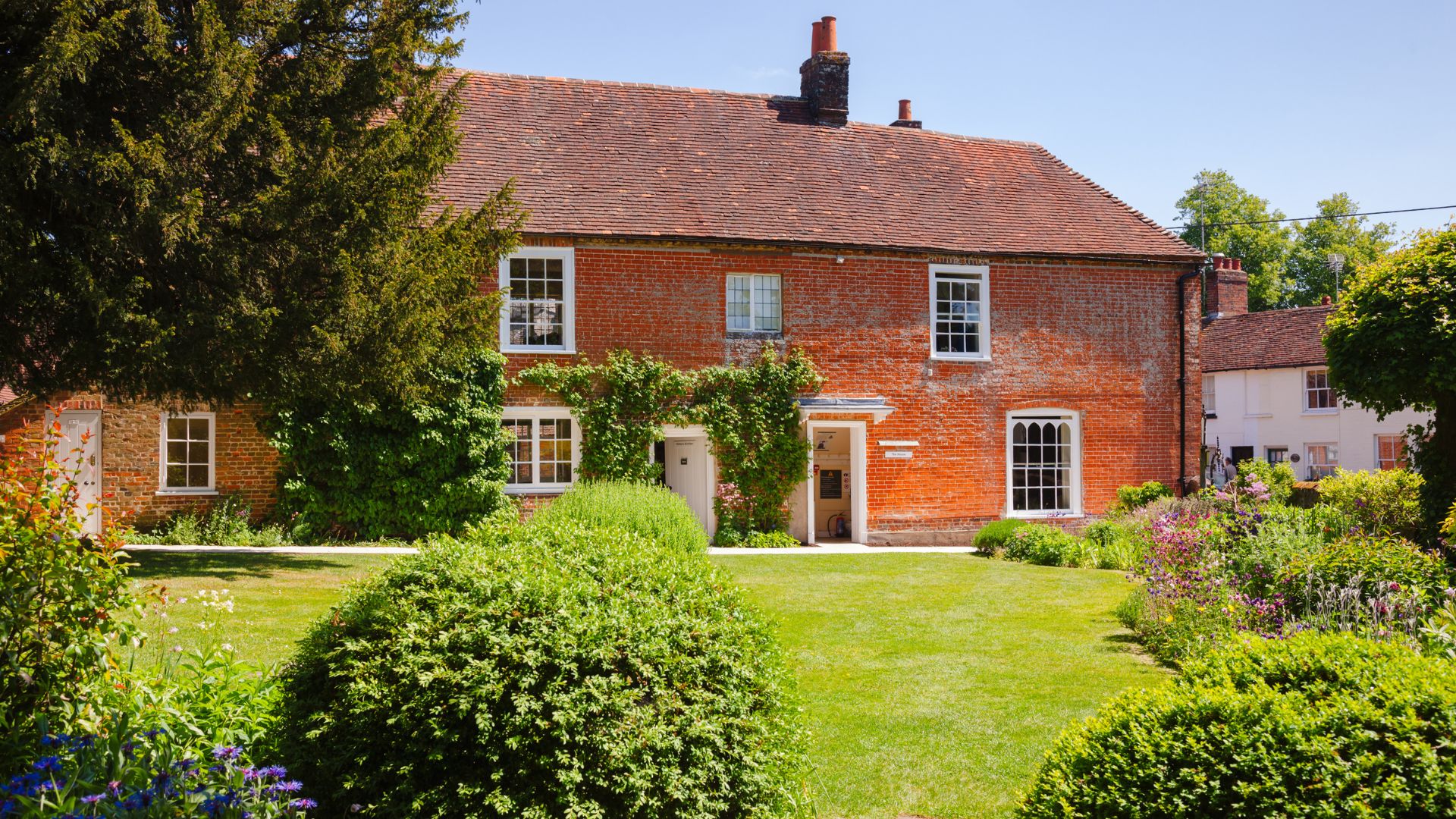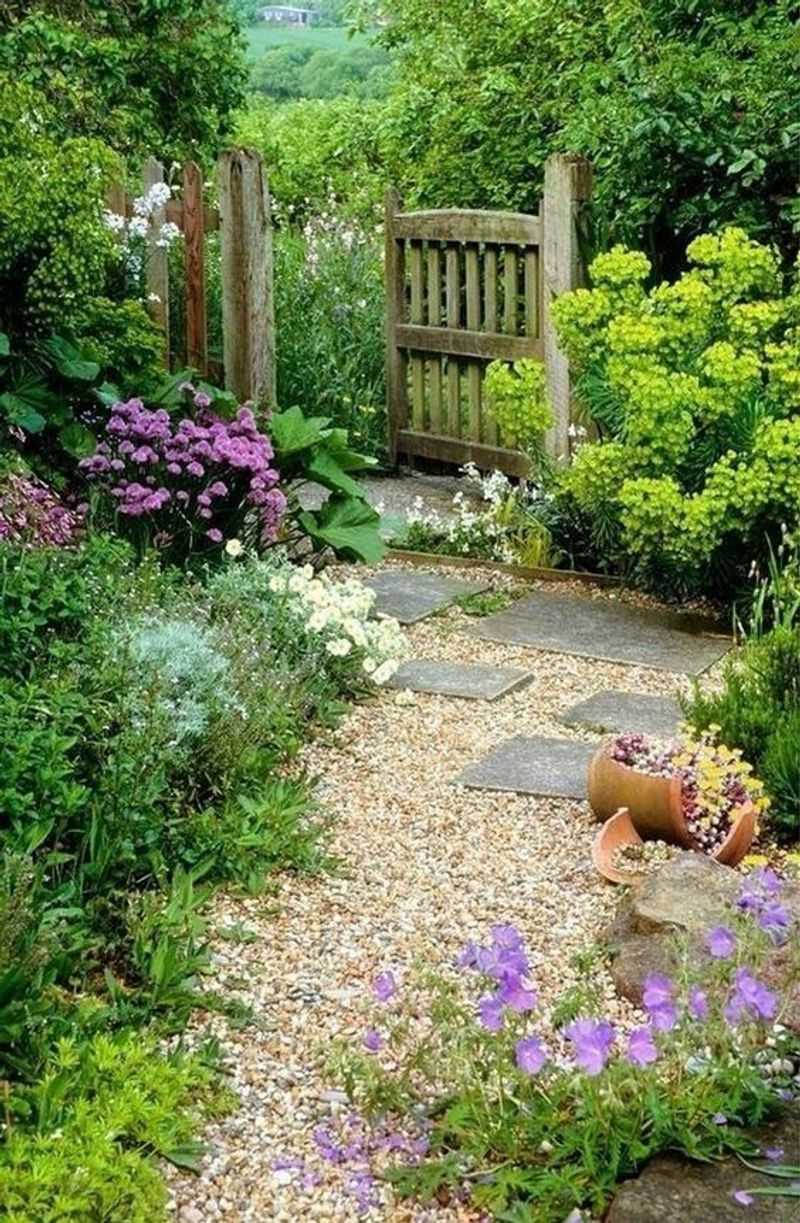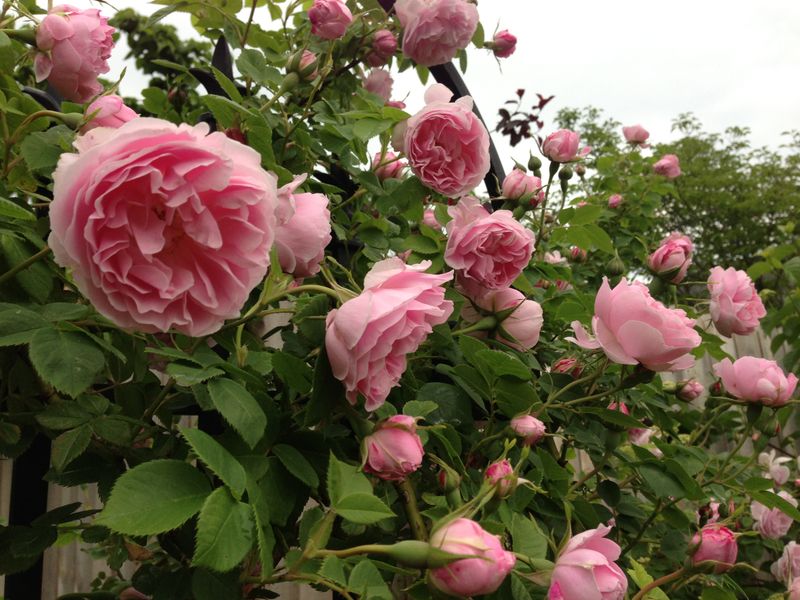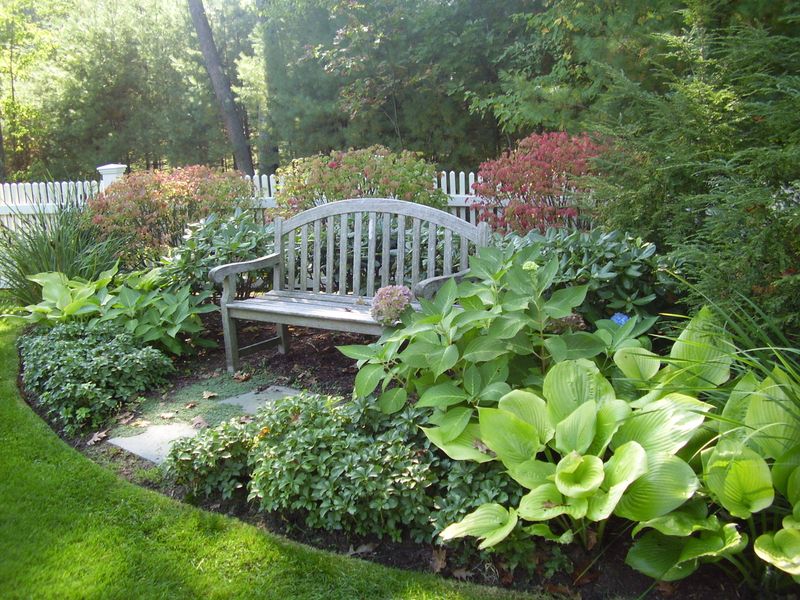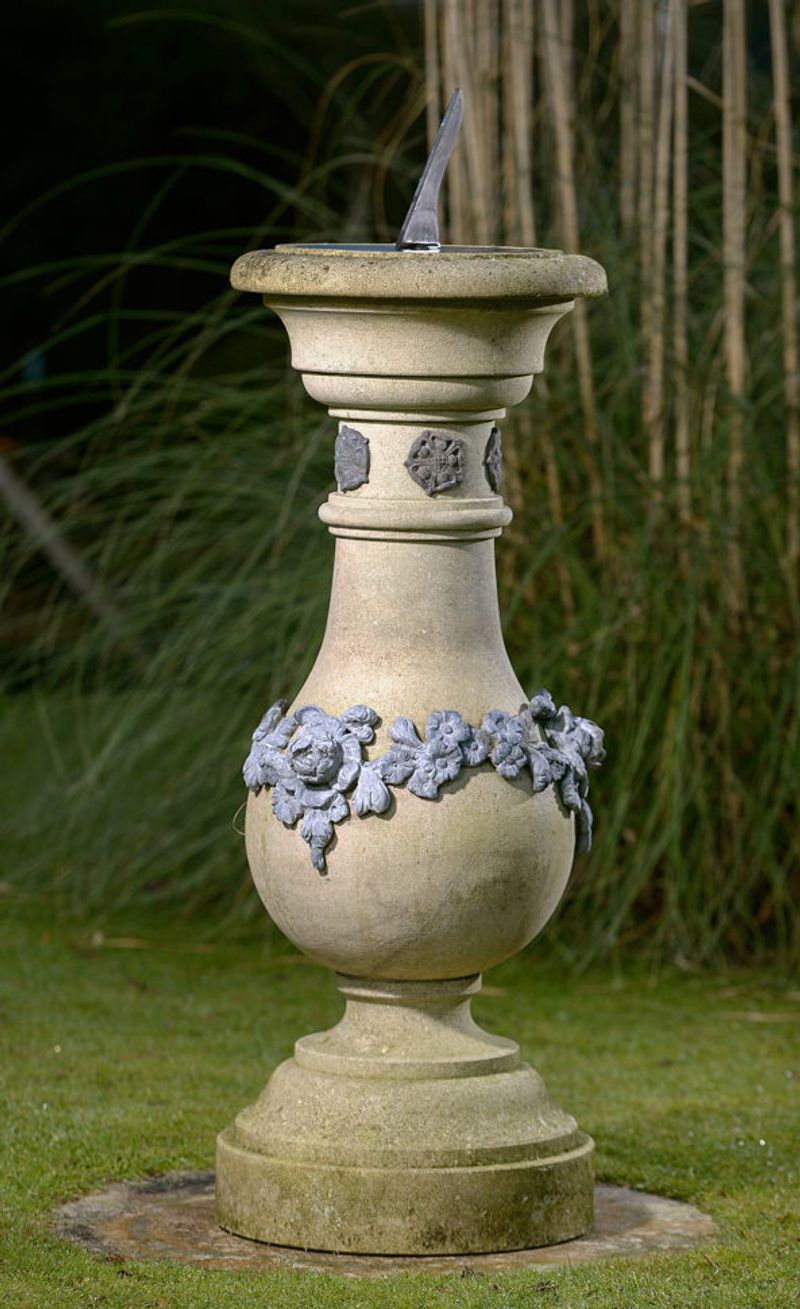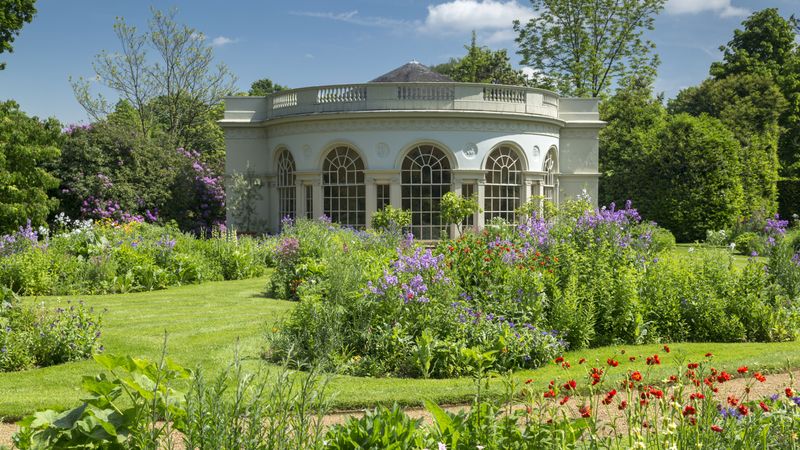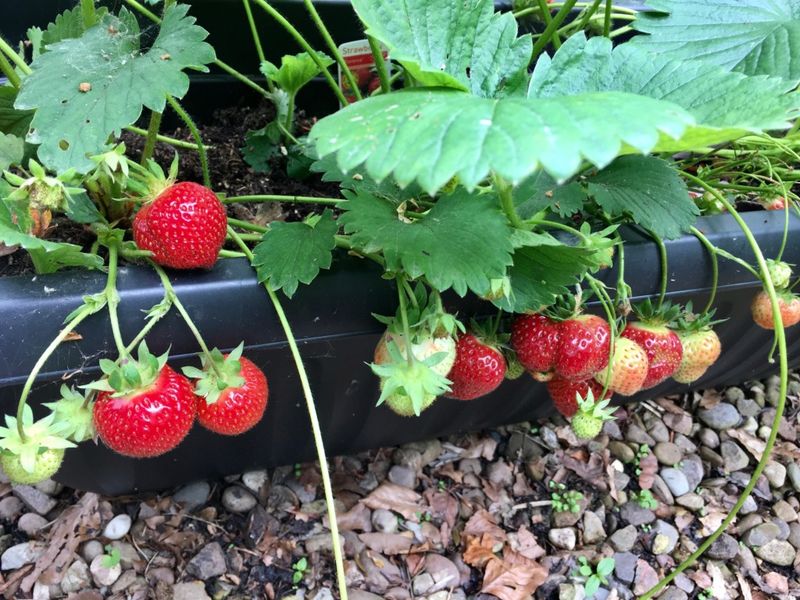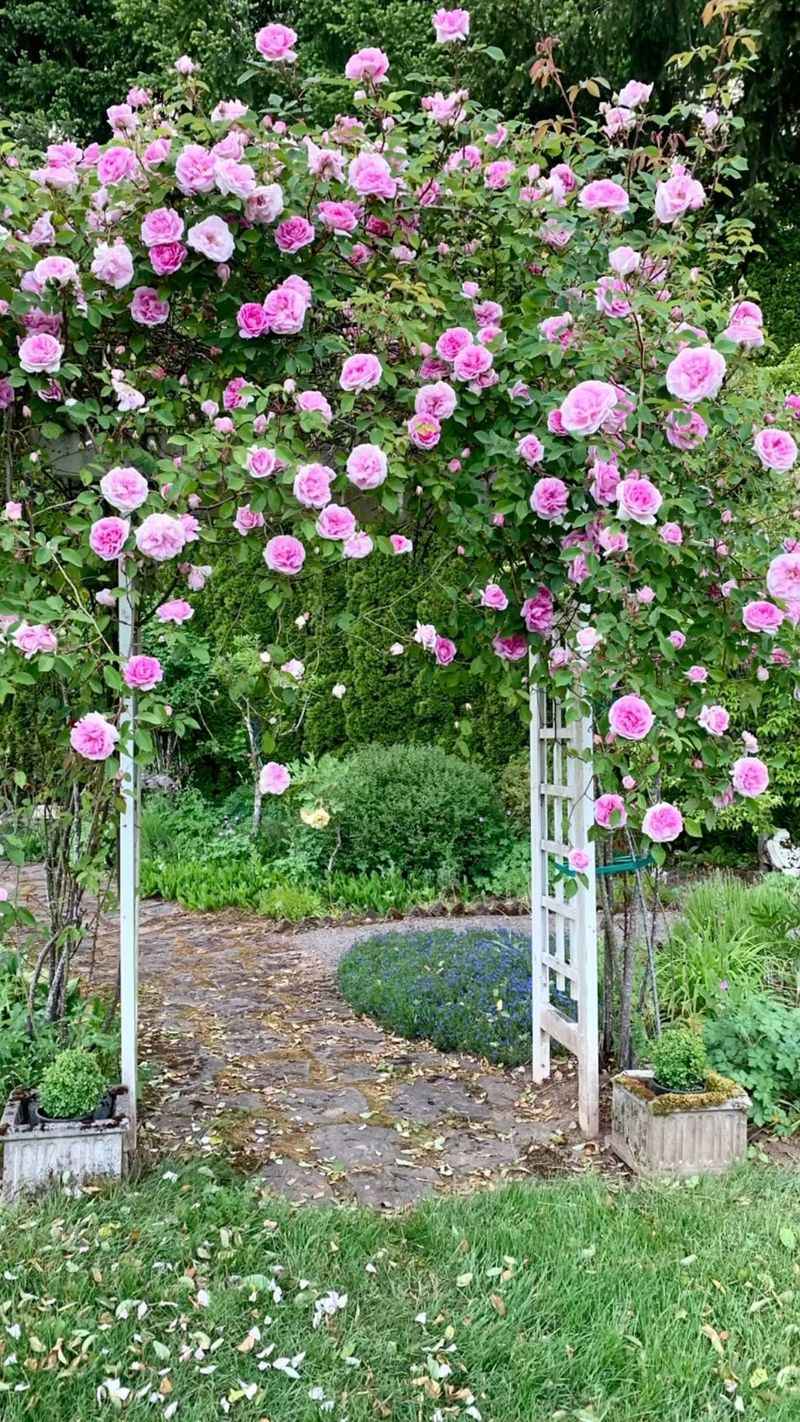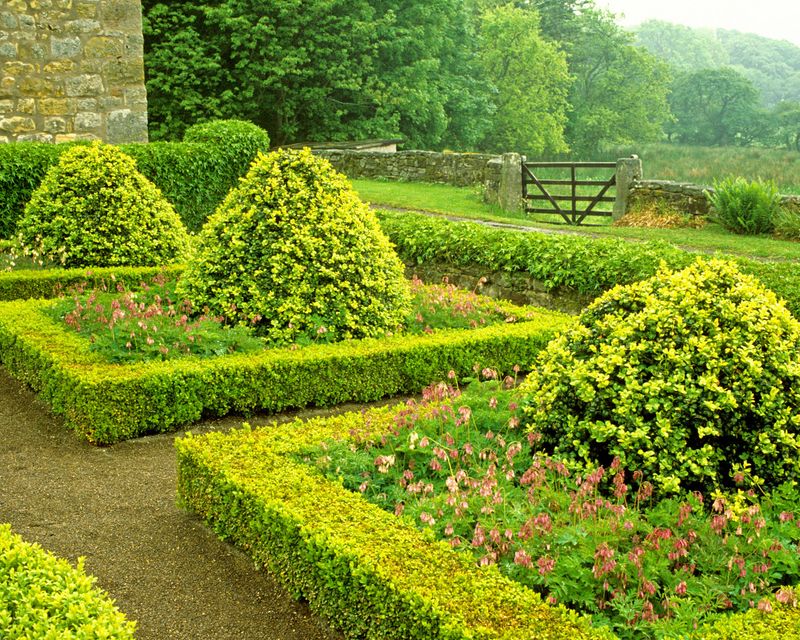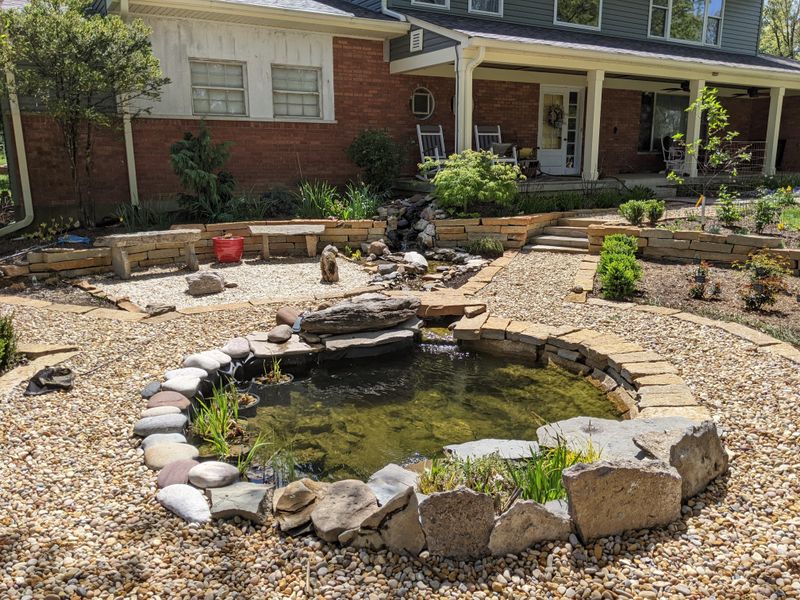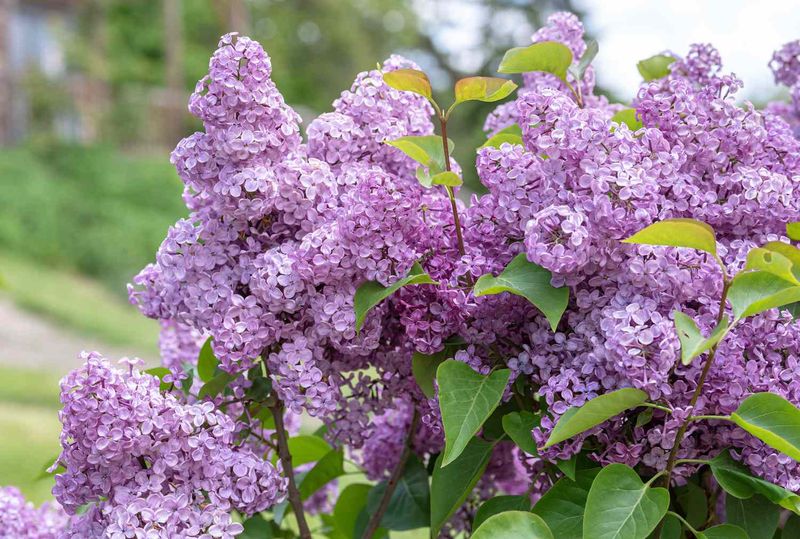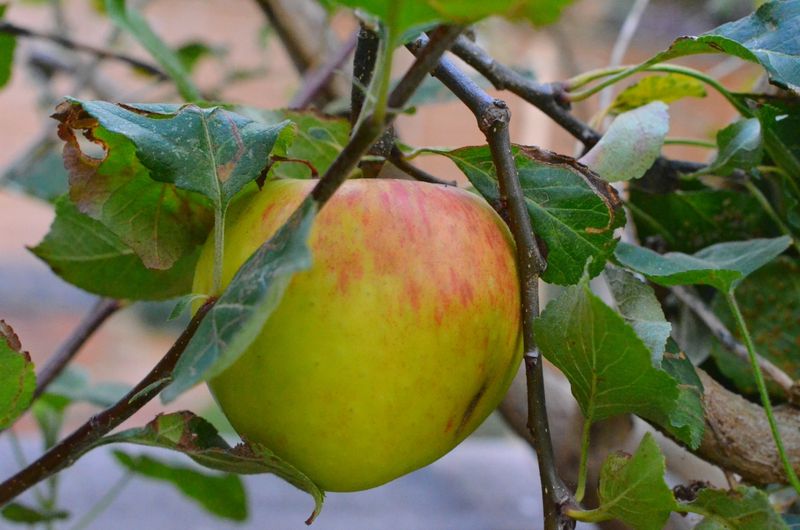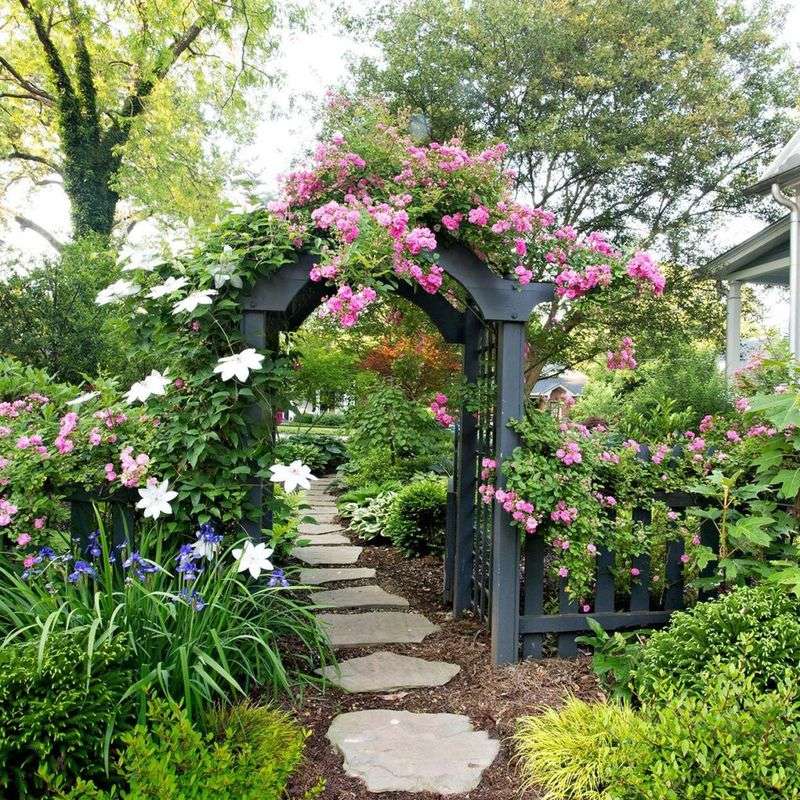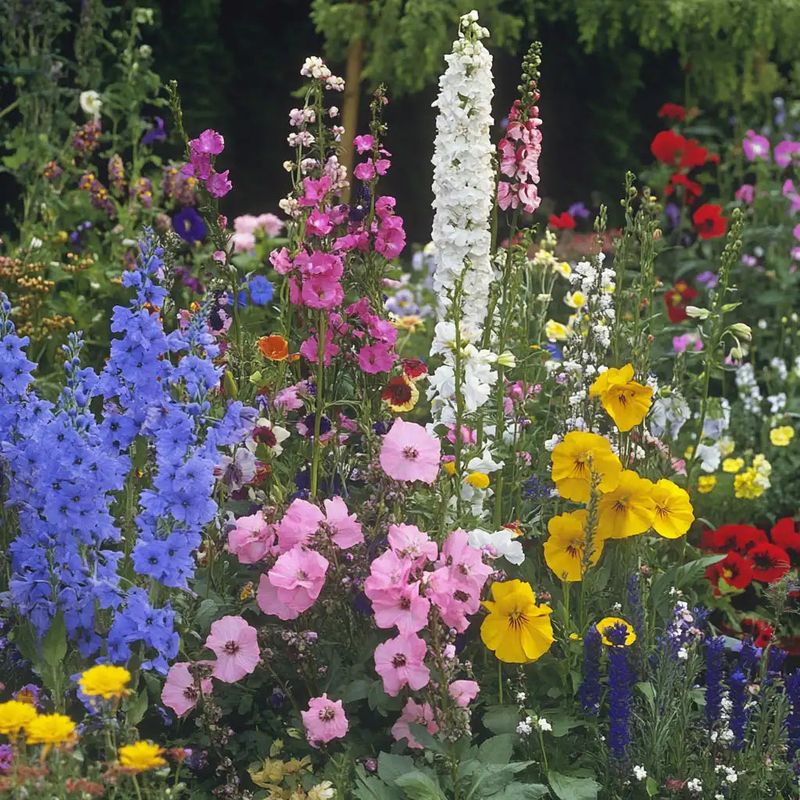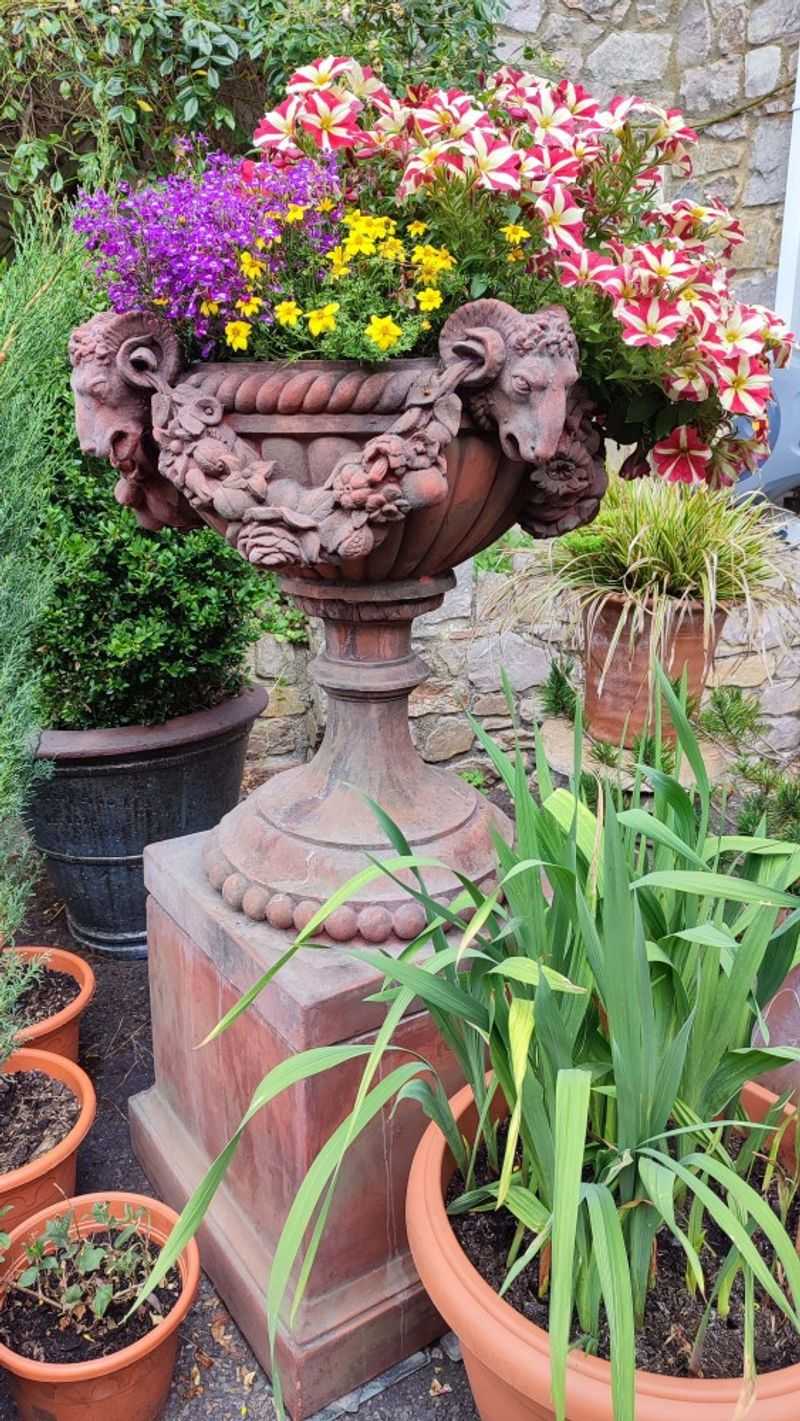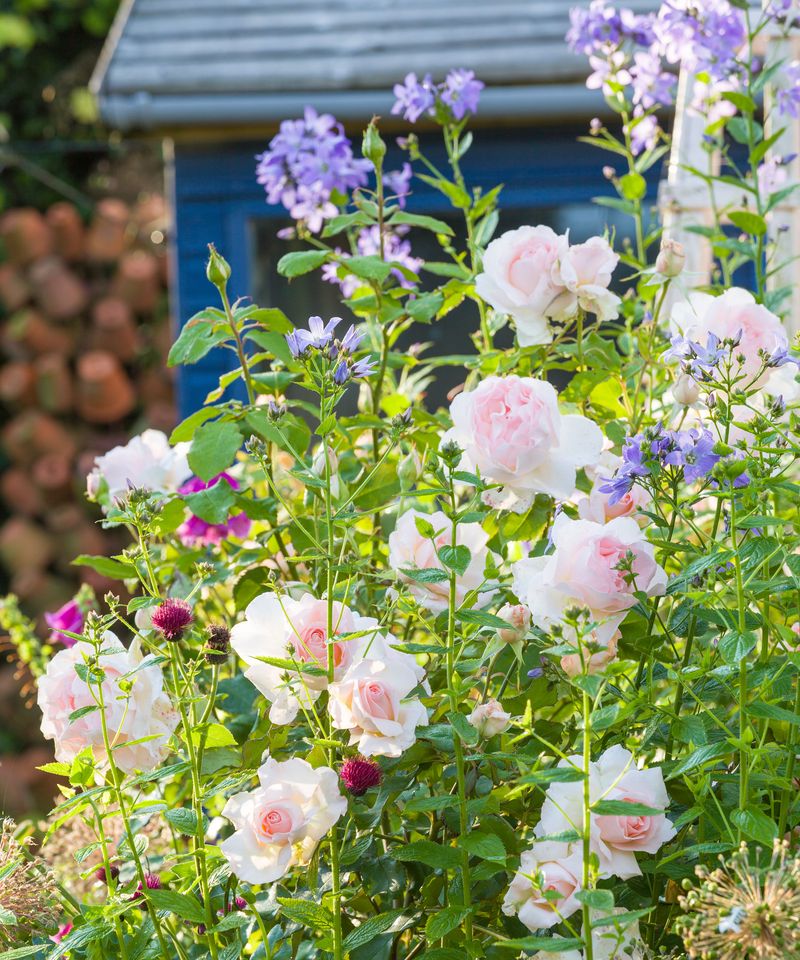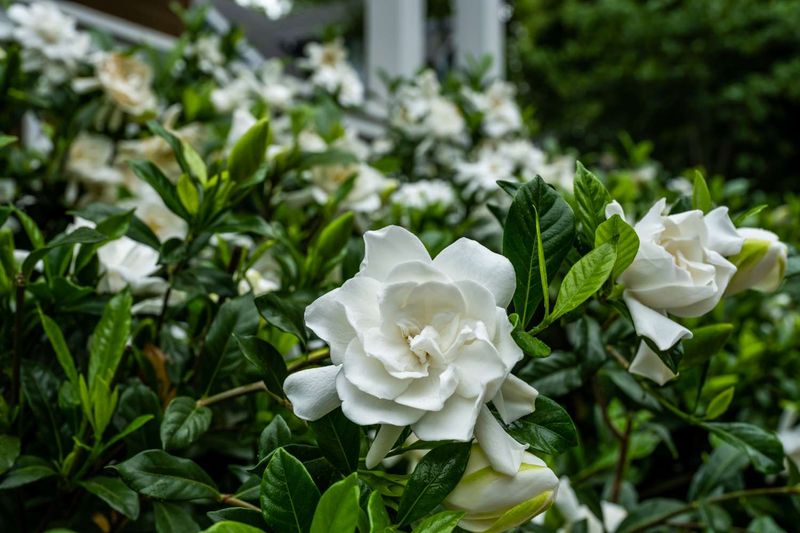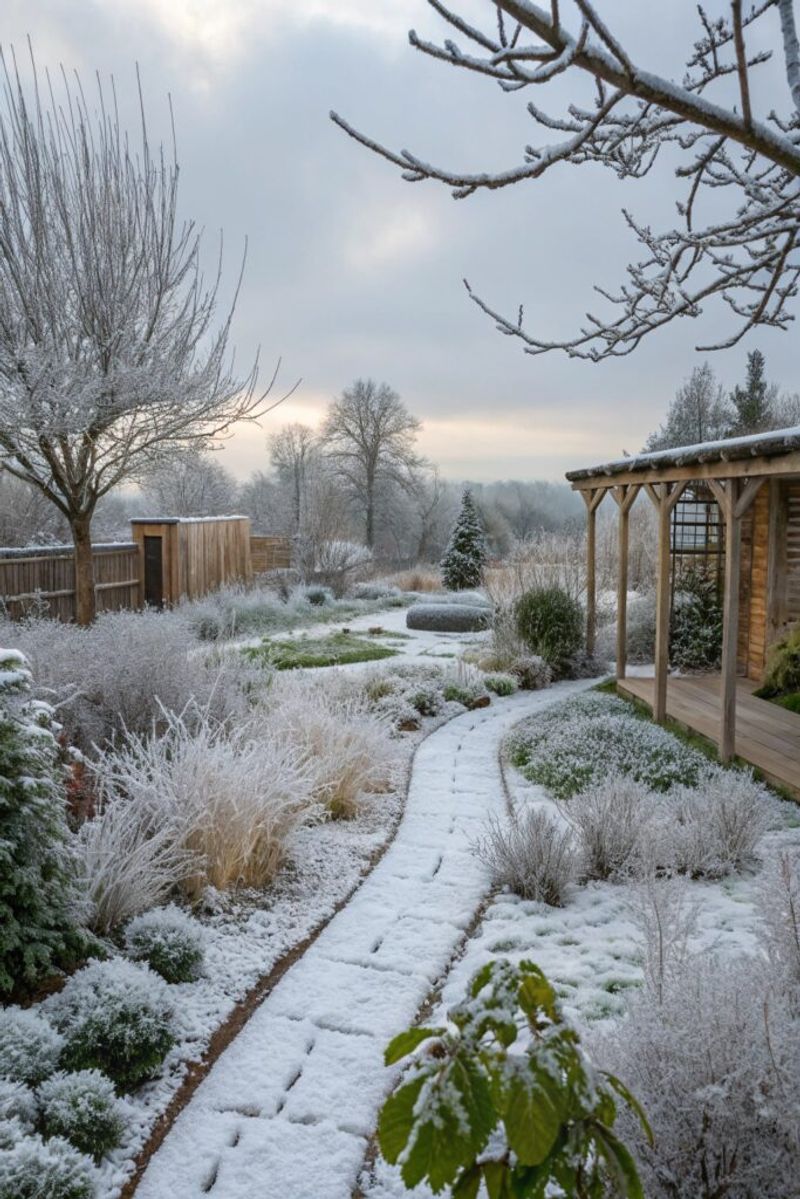Creating a garden that feels like something out of a Jane Austen novel isn’t just about pretty flowers—it’s about capturing that quiet, timeless romance. The kind of space where you can imagine strolling with a book in hand or pausing to admire a rose in full bloom.
A true Austen-style garden balances structure and softness, like neatly trimmed hedges paired with free-flowing blooms. It’s a place that feels elegant but also a little wild—just enough to spark imagination and daydreams.
With a few thoughtful touches, you can turn your garden into a peaceful retreat that invites long walks, quiet conversations, and maybe even a Mr. Darcy moment or two.
1. Start With A Gravel Path
Gravel crunching underfoot creates that distinctive sound that announces visitors, just as it would have in Austen’s day. Choose a fine, light-colored gravel that brightens the garden even on cloudy days.
The path should curve gently rather than run straight, creating a sense of discovery as you walk. I’ve found that edging paths with low boxwood or lavender helps define spaces without feeling too rigid.
Make the path wide enough for two people to walk side by side – conversation was, after all, an essential part of Regency courtship rituals.
2. Plant Heritage Roses
Old garden roses bring authentic character no modern hybrid can match. Alba, Gallica, and Damask varieties would have been familiar to Austen herself. Their scent carries stories of another time.
Unlike today’s perfectly formed blooms, these roses have a natural, almost casual appearance. My grandmother grew Gallicas against an old brick wall – their loose petals and intense fragrance made the garden feel both elegant and untamed.
Plant them where their scent can be appreciated from a window or bench. Morning dew intensifies their perfume, making early garden visits especially rewarding.
3. Create A Secluded Bench
Every Austen garden needs a quiet spot for contemplation – or for reading letters from potential suitors. Choose a simple wooden bench rather than ornate metal; the Regency period favored classical simplicity over Victorian fussiness.
Place your bench where it catches morning light but afternoon shade. My favorite spot in my own garden faces east, letting me enjoy the garden waking up while I have my tea.
Surrounding the bench with scented plants like sweet peas or honeysuckle creates a natural privacy screen and makes sitting there a full sensory experience.
4. Add A Sundial
Time moved differently in Austen’s era, marked by sunlight rather than digital displays. A simple stone sundial serves as both a practical object and a reminder to slow down.
Choose one with a classical design – perhaps bearing a thoughtful motto about the passage of time. I found mine at an estate sale, already weathered with age and more beautiful for it.
Place it in a sunny, central spot where paths intersect. The sundial becomes a natural meeting point and conversation starter, just as it would have been for characters in Pride and Prejudice.
5. Embrace Symmetry
The Georgian era loved order and balance, reflecting the period’s appreciation for classical design. Start with a central axis and mirror plantings on either side.
Symmetry doesn’t mean rigid formality. My garden uses matching lavender borders but allows the plants within them to grow somewhat freely. This balance between structure and natural growth creates the perfect Austen-inspired tension.
Even in small spaces, simple symmetrical touches like matching planters flanking a doorway or identical rose bushes on either side of a path create that sense of Regency refinement.
6. Include A Kitchen Garden
Austen’s characters didn’t just admire flowers – practical kitchen gardens provided both sustenance and pleasure. Set aside a sunny corner for herbs, vegetables, and fruits that would have graced Regency tables.
Strawberries were particularly prized and mentioned in Emma. I grow alpine strawberries, which have smaller fruits but more intense flavor than modern varieties. Their tiny white flowers look charming among the vegetables.
Arrange plants in neat rows with slate markers – function and beauty working together. Rosemary, sage, and thyme create fragrant borders that blend the kitchen garden seamlessly with ornamental areas.
7. Plant An Arbor With Climbing Roses
Few garden features are more romantic than an arbor draped with climbing roses. Choose a simple wooden structure – painted white for a classic look or left natural to weather gracefully over time.
Plant roses that would have been available in the early 1800s, such as ‘Félicité et Perpétue’ or ‘Adelaide d’Orleans.’ Last summer, I sat under my own rose arbor during a light rain, completely dry but surrounded by the intensified scent of roses.
Position your arbor to frame a view or create a transitional moment between garden rooms. The experience of walking through it becomes a small journey in itself.
8. Use Boxwood For Structure
Low boxwood hedges give an Austen garden its backbone, providing year-round structure when flowers have faded. Their deep green color and clean lines create perfect borders for flower beds.
Keep them trimmed to knee height or lower – tall hedges belong to Victorian gardens, not the more open Regency style. My small front garden uses miniature boxwood to outline beds of cottage flowers, maintaining order without overwhelming the space.
Consider creating a simple knot garden or parterre in a sunny spot. These geometric patterns of boxwood filled with flowers or herbs provide visual interest even from upstairs windows.
9. Add A Water Feature
Water brings life and movement to gardens. A simple stone basin or small pond reflects the sky and attracts birds – elements that would have delighted Austen’s heroines during their contemplative walks.
Avoid elaborate fountains in favor of quieter water elements. The gentle sound of water trickling into a basin creates a peaceful atmosphere for reading or conversation.
My small garden has just a weathered stone bird bath placed where morning light catches the water. Surrounding it with moisture-loving ferns and hostas creates a cool retreat during summer heat – perfect for a character like Marianne Dashwood to compose poetry.
10. Plant Flowering Shrubs For Privacy
Private conversations required secluded spots in Austen’s world. Flowering shrubs like lilac, mock orange, and viburnum create natural screens while adding seasonal interest and fragrance.
Arrange them to form outdoor “rooms” where characters might have heartfelt discussions away from prying eyes. The layered effect of different heights and bloom times ensures the garden remains interesting throughout the seasons.
In my own garden, a curved section of lilacs shields a small seating area from the street. When they bloom in spring, sitting there feels like being transported to another time – exactly the feeling an Austen garden should evoke.
11. Incorporate A Fruit Tree
Apple, pear, or cherry trees were common features in English gardens of Austen’s time. Their spring blossoms, summer shade, and autumn fruit made them practical additions with year-round appeal.
Choose a heritage variety that would have existed in the early 1800s. My neighbor’s ancient apple tree produces small, imperfect fruit that makes the most wonderful pies – much like what the Bennets might have enjoyed.
Even small gardens can accommodate dwarf fruit trees. Plant spring bulbs beneath them to create layers of interest, and place a bench nearby to enjoy the dappled shade and falling blossoms.
12. Create Meandering Paths
Garden walks provided essential opportunities for private conversations in Austen’s novels. Secondary paths that wind through plantings invite exploration and discovery.
Make these paths narrower than your main walkways – just wide enough for two people walking closely together. The intimate scale encourages the kind of tête-à-tête that might lead to a marriage proposal.
I’ve lined my garden’s smaller paths with chamomile, which releases its apple-like scent when stepped upon. This sensory detail makes even a brief garden stroll more memorable and grounds visitors in the present moment.
13. Plant Cottage Garden Flowers
Fill beds with the unpretentious flowers that would have brightened Austen-era gardens. Hollyhocks, foxgloves, sweet william, and daisies create an unstudied abundance that softens formal elements.
Group plants in drifts rather than single specimens, allowing them to self-seed and naturalize over time. The garden I remember most fondly from childhood had foxgloves that returned in slightly different spots each year, creating new garden stories.
Choose varieties available before 1817 (when Austen died) for authenticity. These older varieties often have simpler forms but stronger scents than their modern counterparts – a fair trade for any gardener seeking period charm.
14. Add Garden Ornaments Sparingly
The Regency garden favored restraint over excessive decoration. Select just a few meaningful pieces – perhaps a classical urn, simple statuary, or stone finials atop gate posts.
Place ornaments at focal points where they can be appreciated, rather than scattered throughout. The single weathered stone urn in my herb garden draws the eye without demanding attention.
Allow moss and lichen to develop naturally on garden ornaments rather than keeping them pristinely clean. This patina of age suggests the garden has witnessed many seasons and perhaps many love stories – just like the timeless tales in Austen’s novels.
15. Create A Cutting Garden
Fresh flowers for the house were essential in Austen’s time. Dedicate a sunny bed to flowers grown specifically for cutting and arranging.
Include varieties mentioned in Austen’s works, like roses, lilies, and sweet peas. I’ve found that growing flowers in simple rows makes harvesting easier and doesn’t detract from the overall garden design when the bed is placed in a less prominent area.
Add flowers that dry well, such as lavender and strawflowers. These would have provided color and scent throughout winter, just as dried arrangements brightened Regency homes during colder months.
16. Plant Scented Flowers Near Windows
Before air conditioning, open windows provided essential airflow. Planting fragrant flowers like stocks, nicotiana, and evening primrose near the house brings their scent indoors on summer breezes.
Choose plants with different blooming times to ensure continuous fragrance throughout the season. My bedroom window has lilacs for spring, roses for summer, and sweet autumn clematis for fall – each marking the passage of time with their distinctive scents.
Night-scented plants like jasmine and evening primrose would have been especially valued in Austen’s time, when evening garden walks were a common pastime after dinner gatherings.
17. Embrace Seasonal Changes
Austen’s characters were attuned to seasons and their shifting beauty. Plan your garden to highlight rather than fight these natural cycles.
Include early spring bulbs, summer perennials, fall seed heads, and winter structure. The garden changes with each reading of an Austen novel, revealing new layers just as her books do upon rereading.
Leave some plants standing through winter rather than cutting everything back. The frost-covered seed heads of astilbe and coneflowers create beautiful silhouettes against snow or fog – the kind of subtle winter beauty appreciated by more thoughtful characters like Anne Elliot from Persuasion.

